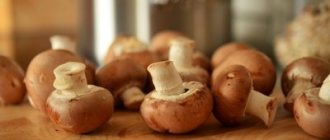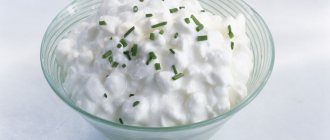Interesting facts from history
Content:
- Interesting facts from history
- And what kind of fruit are you?
- general characteristics
- The nutritional value
- Beneficial features
- Side effects
- How to choose a watermelon
- Medicinal use
- Watermelons in cooking
- Watermelons in cosmetology
Watermelons belong to the pumpkin family. They are grown in many tropical countries, where they are one of the main commercial fruit crops. The homeland of these delicious striped fruits is Southern Africa (Kalahari Desert). According to some assumptions - Brazil or Paraguay. It is there that wild varieties of crops grow in abundance. Over time, the plant spread to other continents.
The first written mention of harvesting watermelons appeared about 5,000 years ago. Egyptologists found this record among the hieroglyphs. The Egyptians grew watermelons in the Nile River Valley and then placed them in the burial tombs of kings. The fruits, according to the ancients, were supposed to nourish the deceased in the afterlife.
Thanks to traders, these pumpkins spread along the shores of the Mediterranean Sea. In the 10th century, they “migrated” to China, which today is one of the largest producers of watermelons. In the 13th century, the Moors brought the fruit to Europe. This fruit was probably brought to the United States by African slaves. And by the way, it was in the USA that the first cookbook containing a recipe for watermelon rind pickles was published. This happened in 1776. In 2005, residents of the American state of Arkansas entered the Guinness Book of Records because they grew the world's heaviest watermelon. His weight was 121.93 kg.
Did you know that eating watermelon can make you gain weight?
“It has been confirmed that the calorie content of watermelon per 100 grams is only 25-38 kcal. This is a one-of-a-kind sweetness that will never lead to completeness...”
Do you believe this? Then, when you see increased numbers on the scales, look for other options that provoked the sad fact.
For now, we’ll tell you how a low-calorie watermelon “dessert” gives an unexpected increase in kilogram equivalent:
Together with a loaf of white bread, rapid weight gain is guaranteed. A cool option for bodybuilders (they use it often). For those who want to have a slender silhouette, scarlet pulp in combination with flour products is “killer”!
Watermelon does not satisfy hunger; its glycemic index is very high - your appetite will definitely increase within an hour after eating the berry. It is important to refrain from indiscriminate consumption of fatty and protein foods.
Popular articles for weight loss and health
How did Bianca lose weight?
Diet Pushinka: menu rules
How did Semchev lose weight?
How did Guzeeva Larisa lose weight?
It’s easy to finish a whole green striped “ball” in one sitting. But the arithmetic of “sugar pleasure” will give a disappointing result. 38 kcal is a small piece; a ripe watermelon itself weighs on average 6 kg.
Multiply and calculate the total calorie content of the berry - 2280 kcal (this is the optimal amount of all calories consumed per day). You're not limited to just watermelon, are you? The counter is creeping up along with the kilograms!
And what kind of fruit are you?
Probably, many of you have at least once wondered what category of products watermelon belongs to: is it a vegetable or a berry, or maybe a fruit? On the one hand, everything is simple: sweet means fruit. But on the other hand, these plants are very reminiscent of pumpkin, zucchini and other melons. And they seem to be vegetables... Well, how can you not get stupefied?
In fact, representatives of the pumpkin family, oddly enough, do not belong to vegetables. At least from a scientific point of view. This means that the circle of doubts is narrowing. It remains to be understood: a watermelon is a berry or a fruit. We won’t bore readers for long and will tell you the correct answer right away. Watermelon is a berry. Why berry? Because it fully corresponds to the “berry” features. It has a fruit with a hard skin, juicy pulp, a large number of seeds and develops from the ovary. By the way, from a botanical point of view, kiwis and tomatoes are also berries. But what’s interesting is that neither cherries nor raspberries belong to this group.
However, no matter what biologists call these fruits, the taste of watermelons does not change. For centuries, they have remained the main summer delicacy for many. Even if many do not even know which botanical category this plant belongs to.
Summarize
- Watermelon is an amazingly beneficial fruit for human health. It is high in water content and also provides the body with many other important nutrients, including lycopene and vitamin C.
- The presence of these nutrients in watermelon means that it is not only a delicious low-calorie treat, but also very beneficial for your health.
- However, as with other foods, you should eat it in moderation as excess consumption can lead to some of the side effects mentioned above.
The article was prepared by experts for informational purposes only. It should not be used as a guide for treating medical conditions and is not a substitute for professional medical advice, diagnosis, or treatment. In case of illness or any symptoms, you should always consult a doctor and not self-medicate.
Tags: Watermelon
About the author: Alexander Fedorov
Candidate of Biological Sciences, biologist, nutrition expert. Graduated from Stavropol State University with a degree in Biology at the Faculty of Biology and Chemistry.
- Related Posts
- Red raspberries and black raspberries: what's the difference?
- What is the difference between a peach and a nectarine?
- Avocado: benefits and harm for the human body
« Previous entry
general characteristics
Dark seeds against the background of a bright watermelon crumb. This is roughly how the majority of the world’s population imagines this fruit.
But not so long ago, scientists developed a, so to speak, sterile hybrid of the fruit that does not produce seeds.
Today there are about 1,200 varieties of this plant in the world, which are grown in more than 90 countries, including China, the USA, Greece, Hungary, Bulgaria, Russia, and Ukraine. Most often, about fifty types of watermelons end up on markets. The most popular: Astrakhan (aka Bykovsky), Kamyshin, monastery, Kherson.
A few weeks after planting, large yellow flowers appear on the plants, and after pollination, fruits develop in their place. The climbing stem usually reaches 3 meters. The color of the peel can be of a variety of shades and with a variety of patterns (depending on the variety). The color and taste of the crumb is also determined by the variety. It can be red, pink or yellow, and its texture is always crispy, which is why it differs from the creamy pulp of melons.
Watermelon for children: benefits and at what age to give it
It is not recommended to include watermelon in baby food before two to three years of age. At the very first use, you should not give more than 50 grams, as an allergic reaction is possible. After a day has passed and there are no negative consequences, watermelon is given to the child, taking into account the approximate daily norm:
- from two to two and a half years - from 50 to 150 grams;
- from two and a half to three years - from 150 to 250 grams;
- from three years – 250 – 400 grams.
Important! Carefully peel the seeds from the watermelon so that the baby does not choke on them.
Sweet fruits contain components that are valuable for the child’s body, which have various positive effects on health or are a good preventive measure.
- Water quenches thirst well on a hot day and prevents dehydration.
- Fiber promotes normal functioning of the stomach and intestines and is a preventative against constipation.
- To treat anemia and anemia, watermelon contains iron.
- Numerous types of vitamins will come to the rescue to improve your mood and strengthen your immune system, as well as improve brain activity.
- Glucose and fructose will bring a boost of vivacity and add positive energy.
- Potassium and magnesium are necessary for children with fragile blood vessels to strengthen them.
The nutritional value
Watermelons are made up of water and carbohydrates.
They contain almost no protein or fat, and the number of calories is kept to a minimum. Almost 92 percent of the fruit's composition is liquid. Each bite of this sweet treat contains significant amounts of minerals, vitamins A, C and B, antioxidants, amino acids and phytonutrients. 100 grams of the product contain no more than 40 kilocalories, and watermelon seeds contain oil, the properties of which are similar to almond oil. Nutritional value per 100 g of product
| Calorie content | 25-40 Kcal |
| Water | 91-92 % |
| Squirrels | 0.6 g |
| Carbohydrates | 7.6 g |
| Fats | 0.2 g |
| Vitamin A | 28 mcg |
| Vitamin C | 8.1 mg |
| Vitamin E | 50 mcg |
| Vitamin K | 0.1 mcg |
| Vitamin B1 | 30 mcg |
| Vitamin B2 | 20 mcg |
| Vitamin B3 | 180 mcg |
| Vitamin B5 | 220 mcg |
| Vitamin B6 | 50 mcg |
| Folic acid | 3 mcg |
| Kholin | 4.1 mg |
| Calcium | 7 mg |
| Iron | 0.24 mg |
| Magnesium | 10 mg |
| Phosphorus | 11 mg |
| Potassium | 112 mg |
| Sodium | 1 mg |
| Zinc | 0.1 mg |
| Copper | 0.04 mg |
| Manganese | 0.04 mg |
| Selenium | 0.4 mcg |
Carbohydrates
The average carbohydrate content in 100 g of watermelon is approximately 7-7.5 g. These are mainly monosaccharides (fructose, glucose, sucrose). The glycemic index of this product is quite high - 72-80. However, given that watermelon contains relatively few carbohydrates per serving, consuming the fruit will not significantly affect your blood sugar levels.
Vitamins and minerals
These fruits are an excellent source of many other beneficial components:
- vitamin C (an antioxidant essential for healthy skin and immune health);
- potassium (a mineral important for regulating blood pressure and maintaining heart function);
- copper (important for hair);
- vitamin B5 (like other B vitamins, important for the nervous system);
- vitamin A (presented in watermelons in the form of beta-carotene, essential for healthy eyes, skin, and hair).
Lycopene
Scientists have noticed that watermelons contain high levels of lycopene: 15-20 mg per 200 g of product, which is almost one and a half times more than tomatoes. Lycopene is a phytonutrient found in plant foods that has beneficial effects on the human body. This substance is also a natural carotenoid pigment responsible for the red color of watermelons, tomatoes, guavas and red grapefruits.
Lycopene is believed to be beneficial for the heart, bones, and also serves as a preventive substance against prostate cancer. In addition, it is also a powerful antioxidant with anti-inflammatory properties.
To get the maximum amount of lycopene, it is important to allow the fruit to ripen well. The redder the watermelon crumb, the more beneficial substances it contains. As the fruit ripens, the amount of beta-carotene also increases.
Citrulline
Another beneficial phytonutrient found in watermelon is citrulline. By the way, watermelon is the richest food source of this amino acid. Most of the substance is contained in the white rind surrounding the watermelon crumb.
Once in the body, citrulline is converted into another amino acid - arginine. Both substances play an important role in the synthesis of nitric oxide, which helps reduce blood pressure, relax and dilate blood vessels. Citrulline improves blood flow and has a positive effect on the functioning of the heart muscle. It is believed that citrulline can improve erectile function in men. But to achieve a Viagra-like effect, you will have to eat a lot of fruit. It is also known that arginine is important for the proper functioning of the lungs, kidneys, liver, reproductive system, and promotes wound healing.
But despite the fact that watermelon is one of the best sources of citrulline, to obtain the daily requirement of the substance you would have to eat more than 2 kg of berries.
Health benefits
Watermelon has antioxidant benefits because it is an excellent source of lycopene, a carotenoid phytonutrient that research has shown may be effective for high blood pressure. Lycopene is known to be present in tomatoes, but fully ripe watermelon has even more lycopene. Other antioxidants you'll find in the berry include flavonoids, carotenoids, and triterpenoids.
The amino acid citrulline is present in significant quantities in watermelon. You can find concentrated citrulline capsules sold as a performance supplement. The benefits of citrulline are not conclusive, although there is research that suggests citrulline supplements may reduce feelings of fatigue during exercise.
Read further on the topic:
- Melon while dieting, what is the calorie content of melon?
- Dukan squid recipe
Beneficial features
There is nothing strange in the fact that a fruit with such a unique chemical composition has a wide range of effects on the body. Here are just some of the beneficial properties of watermelons.
- Heart and blood pressure.
Lycopene, citrulline and arginine contained in watermelons reduce the risk of developing cardiac diseases, improve blood flow and effectively regulate blood pressure in obese people. In addition, potassium and magnesium, which are also found in significant quantities in watermelons, have a positive effect on blood vessels and the heart.
- Anti-inflammatory properties.
Watermelons fall into the category of “anti-inflammatory fruits” due to the presence of lycopene in their composition. This substance is an inhibitor for various inflammatory processes, and also works in the body as an antioxidant, neutralizing free radicals. Watermelons also contain choline, which is known to be useful for treating chronic inflammation. In particular, this substance makes the berries beneficial for people with arthritis.
Working together, all these substances strengthen the immune system, thereby improving overall well-being.
- Hydration.
Watermelons are a great example of a food that will help restore water balance in the body. They are not only maximally saturated with water, but also contain useful electrolytes. Together, this helps prevent heat stroke. For this purpose, in tropical countries, many people eat this fruit every day throughout the summer.
- Digestion.
The fiber that watermelon is made of has a beneficial effect on the gastrointestinal tract and also helps maintain normal weight.
- Skin and hair.
Vitamin A is a substance without which skin and hair cannot look beautiful. And it’s worth noting that just a 100-gram slice of watermelon contains almost a quarter of the recommended daily intake of this vitamin. In addition, the fruits are rich in ascorbic acid, which promotes the production of collagen and elastin, necessary for the healthy growth of epidermal cells.
- Benefits for bodybuilders.
Research conducted in 2013 showed that watermelon juice is essential for athletes. It turned out that in order to reduce muscle pain after intense training, it is enough to drink about 500 ml of juice 1 hour before exercise. Scientists are still at a loss as to what could cause this effect. But there is an assumption that this is the “work” of the amino acids citrulline and arginine, which are found in high concentrations in watermelons.
- Cancer prevention.
Like many fruits and vegetables, watermelon belongs to the anti-cancer food group. Not least due to its antioxidant properties. In particular, experiments have shown that lycopene prevents the proliferation of prostate cancer cells and reduces the risk of breast, intestinal, and lung cancer.
- Insulin resistance.
Insulin is an important hormone in the human body, which directly affects the level of sugar in the bloodstream. Insulin resistance is a condition in which the gland produces insulin, but the cells are resistant to its effects. This condition can lead to type 2 diabetes. Watermelon juice, according to some studies, can reduce the level of resistance, thereby preventing the risk of “sugar disease”.
- Kidneys.
The spectrum of beneficial substances that form the chemical composition of watermelons includes potassium, which is very useful for removing toxic deposits in the kidneys. In addition, this element is useful in reducing the concentration of urea in the bloodstream, which in turn reduces the risk of kidney damage and the formation of kidney stones.
Among other things, do not forget that watermelons are more than 90 percent water. Therefore, they are an excellent diuretic, which is also good for cleansing the kidneys.
- Vision.
You don't have to worry about your eye health if you have watermelons in your diet. This fruit, rich in beta-carotene, vitamin C, and lutein, has an excellent effect on vision. The listed components protect against drying out of the mucous membrane of the eyes, the development of glaucoma and cataracts.
Features of eating watermelon on a diet
Answering the question - how many calories are in watermelons and can you eat them at night, nutritionists recommend using sweet berries for fasting days and various mono-diets. It effectively quenches thirst and gives a feeling of fullness, so it is impossible to gain weight on watermelons.
One of the most popular and effective diets is watermelon. For 3 days you are allowed to eat only berry pulp and a few slices of black bread. This low-calorie diet helps you get rid of 3-4 extra pounds.
Side effects
If watermelons are consumed in reasonable quantities, these fruits will not cause side effects. Meanwhile, it is important to know that these fruits contain potassium and lycopene, an overdose of which is extremely undesirable.
Consumption of more than 30 mg of lycopene per day may cause nausea, diarrhea, stomach upset and bloating. An allergy to watermelons can manifest as itching in the mouth and throat, swelling of the mouth and throat, and sometimes of the ears. People with hyperkalemia should also carefully consume watermelon, which contains 112 to 140 mg of potassium per 100 grams. An overdose in such cases is fraught with arrhythmia and other cardiac problems and muscle dysfunction.
Possible harm and contraindications
Watermelon tends to accumulate nitrates in the fruit. Their excess is toxic to the human body, negatively affects the condition and functionality of the digestive organs, provokes hypoxia and, worst of all, increases the risk of cancer.
Eating fruits against the background of diarrhea can lead to disruption of the water-salt balance , dehydration of the body, and calcium leaching, which will negatively affect the condition of the musculoskeletal system and the strength of bone tissue.
Due to its pronounced diuretic effect, watermelon should be consumed with caution if large salt stones are detected in parts of the urinary system (liver, kidneys, ureter, urethra). There is a possibility that the increased outflow of urine can dislodge stones and disrupt urodynamics, causing pain, blockage of the urinary tract, and kidney dysfunction.
Contraindications to consuming large portions of watermelon pulp are relevant in the presence of diseases and pathological conditions such as:
- allergy to the product;
- diarrhea;
- stones of the ureter, urethra in the kidneys, liver;
- increased acidity of gastric juice;
- diabetes mellitus type 2 and 3;
- gastrointestinal diseases of an erosive-ulcerative nature, especially in the acute stage.
How to choose a watermelon
Before getting down to practical advice on choosing the most delicious berry, it is important to say that in our latitudes, ripe watermelons appear no earlier than the end of July, and the peak of fruiting is mid-August.
A ripe watermelon can be recognized by:
- a dull hum when you pat it with your palm;
- crunching when lightly squeezed;
- marks that remain if you run your fingernail over the peel;
- sweet taste (red color is not a guarantee of ripeness).
Not the best choice is:
- cracked or cut fruit;
- too big or too small (usually overripe or underripe);
- fruits with a large white spot (indicating immaturity);
- sold along roads (watermelons intensively absorb toxic substances from the air);
- berries with yellow fibers in the pulp (this is a sign of an excessive amount of nitrates; in “proper” fruits the fibers are white);
- watermelons, the pulp of which colors the water (this indicates the use of artificial dyes to give the pulp a red color);
- fruits with a sour odor (cause poisoning).
And a few more important notes. Nitrates are mainly concentrated in the peel of the berry and in its crumb near the peel (the closer to the peel, the higher the value). It is advisable to eat the cut fruit within 3 hours. You shouldn’t even store “opened” berries in the refrigerator for longer (the pulp of watermelons is an ideal environment for the proliferation of microbes). In addition, the concentration of nutrients in chilled (or frozen) berries is significantly reduced.
Fasting day on watermelon
Watermelons are ideal for losing weight in the shortest possible time - for example, for fasting days. On this day, it is recommended to consume only 2-3 kg of berry pulp, dividing it into 3-4 doses.
You cannot eat other foods. You are only allowed to drink unlimited amounts of still water. Many people who are losing weight speak positively about watermelon fasting days - in 24 hours they managed to get rid of 1.5-2 kg.
Important! Unloading on watermelon pulp cannot be carried out more often than once every 7-10 days.
Shelf life of whole and cut watermelon
The maximum shelf life of a whole watermelon is no more than 90–100 days. Only fruits with a thick crust, without a single damage to its surface, without dents, cracks, mold or signs of disease, are suitable for storage. Favorable conditions are high air humidity (80-90%), temperature - from 1 to 5 degrees Celsius, lack of lighting and high-quality ventilation of the room. The fruits should not touch each other.
It is advisable to consume the cut watermelon on the same day, but if necessary, you can keep it in the refrigerator for about two to three days. In warm conditions, after ten to twelve hours, fermentation processes begin and the product becomes dangerous.
What harm can it do?
If the watermelon is grown according to all the rules and does not contain additives, such a product is not capable of causing harm.
But if we are talking about the fact that this berry has an overestimated glycemic index, then it is contraindicated for those suffering from obesity or diabetes.
If large kidney stones are found, watermelon is able to move them. But you shouldn’t get carried away with it with such a diagnosis.
The product is also not recommended for severe pathologies of the prostate gland, pyelonephritis and kidney diseases.
Therapeutic effect of watermelon rinds and seeds
Watermelon rinds are:
- beneficial microelements, vitamins, antioxidants and many other beneficial chemical elements;
- the fight against excess weight and anxiety, anxiety for no reason and nervous disorders;
- relief of muscle pain after sports activities, headaches;
- elimination of swelling, strong diuretic and choleretic effect;
- moisturizing and nourishing masks for the skin.
Watermelon rinds can be added to vegetable and fruit salads, they can be fried like zucchini or together with meat and potatoes. First, the hard outer peel (green) is completely cut off, and the remaining (white) is cut into small pieces. The dried peels are brewed with boiling water, left for a few minutes and drunk as tea. To relieve headaches, fresh peels are applied to the frontal area.
Watermelon seeds are:
- effective remedy for worms;
- an effective decoction for skin diseases and bleeding;
- tincture to reduce high fever.
Tinctures and decoctions are prepared from watermelon seeds, crushed for compresses and lotions, and also dried and consumed fresh.
Healthy watermelon drinks
Smoothie
To prepare a watermelon-based smoothie, various additional ingredients are used: exotic or familiar fruits, herbs, yoghurts and other products. All ingredients are mixed using a blender until smooth and you enjoy a bouquet of flavors and aromas. The amount of each ingredient depends on individual preferences and can be changed according to your wishes.
Smoothie options:
- watermelon pulp, honey, mint leaves, yogurt, cinnamon;
- watermelon pulp, kiwi, mint, yogurt, ice;
- watermelon, pineapple, vanilla, yogurt with peach;
- pieces of watermelon, strawberries, banana, mint leaves;
- watermelon, cherry, banana, mint;
- watermelon pulp, strawberries, yogurt, oatmeal, lemon zest.
Refreshing drink
On hot summer days it is difficult to do without refreshing soft drinks. One of the popular summer drinks is lemonade based on watermelon pulp and mint.
To prepare it you will need the following products: approximately one kilogram of seedless watermelon pulp, one and a half medium-sized lemons, one hundred grams of granulated sugar, a generous handful of fresh mint leaves.
First, squeeze lemon juice into a large container, put the remaining parts of the lemon, sugar and mint leaves there. Grind everything thoroughly using a wooden spoon, add watermelon pulp, whipped in a blender and strained through a sieve (that is, juice) and pieces of ice.
A pleasant and light watermelon drink can also be made from pureed pulp, lemon juice, sparkling water or drink, sugar and ice.
Cocktail (non-alcoholic)
There are many simple non-alcoholic cocktails that are also prepared using a blender. They are distinguished by their unique taste, freshness and individual taste, giving strength and vigor. Whisk all ingredients until smooth and serve immediately.
Cocktail options:
- frozen cubes of watermelon pulp (about 500 grams), vanilla ice cream (100 grams), milk (250 ml), sugar (three tablespoons);
- watermelon pulp and fresh strawberries (500 grams each), ice cubes;
- cold mineral water (300 ml), watermelon pulp (500 grams), lemon juice, mint leaves;
- watermelon pulp (600 grams), two large bananas, coconut milk or cream (200 ml);
- watermelon pulp (about 1 kg), liquid honey (one tablespoon), cold water (one glass), lemon juice (50 ml), sugar syrup or sugar (to taste).











